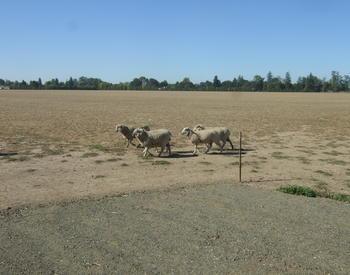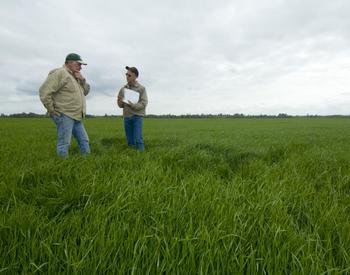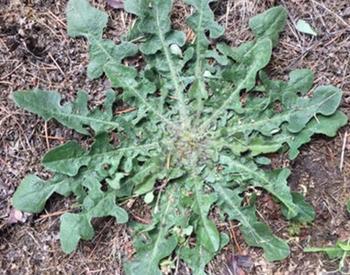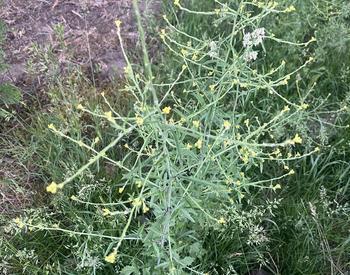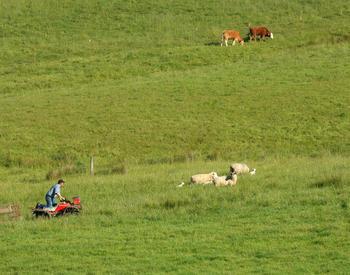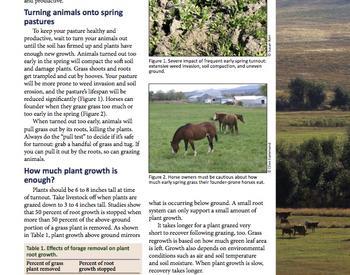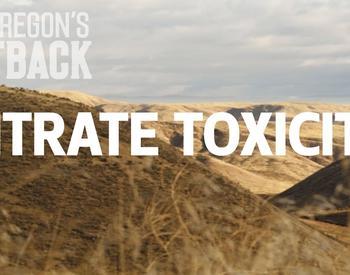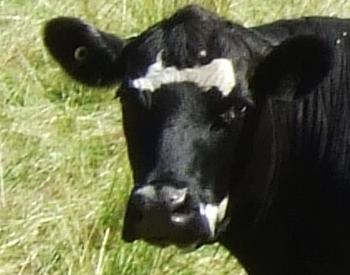Every summer, we see many of our fields dry up and turn brown. We think about the previous season’s forage and wonder if we could have done better. The anticipation of fall rains brings thoughts of improving on what we have. What should we do?
If we get ahold of a new field, we may get in a hurry to improve the farm ground and rush into a course of action that actually hinders the process. The tendency is to want to completely renovate the pasture without giving it a chance (a little TLC) to express what is already there.
Whether we are working with a familiar field or a new prospect, plowing and tilling right away may cause us to overlook preliminary steps that are important to success further down the line or overlook the potential that already exists. We should slow down and take care of some basic duties (in a logical order) that will actually put us ahead of the improvement process compared to rushing into things.
There are several questions that need to be explored before a plan is implemented. I hope exploring the following questions will provide a starting place for you to optimize the efficiency of forage production and use on your ranch. Please call or e-mail me for more information and assistance.
What is the intended use of the forage?
The main goals of improving pastures and hay ground are to increase forage yield and stand persistence. One might also want to change the forage to accommodate grazing preference of specific animals or target a hay market. If you are producing hay for sale, then optimizing yield is definitely something you should investigate. If you are feeding animals, you need to decide how much forage you need for them and then ask yourself if you have enough to meet their needs.
This sounds like an unnecessary question, but it is one that I find often needs to be asked. Here is an extreme example. If you only have five cows on 100 acres, the native vegetation and unfertilized ground in Western Oregon should be able to more than support the needs of the cattle. If you have five cows on 5 acres, then you will need to find a way to manage your forage production so that you optimize the use of your fields and minimize the purchase of harvested feed.
You get the picture. If you are unsure about the amount of forage your animals need or about the amount of animals your forage can support, I can help you calculate estimates. Use this information to decide whether or not you need to make any adjustments.
What is the current yield of the field?
It is important to get a good estimate of current forage yield. You can use this information to see if you are approaching maximum productivity or if you have much potential for improvement.
Yield from hay
To calculate yield in tons per acre of harvested forage, count the number of bales per acre. Weigh a few of the bales so you have an accurate average bale weight and then do the math. Here is an example calculation:
Yield from hay
= No. bales x bale wt. / ac
= 800 bales x 60 lb/bale / 10 acres = 4,800 lb/ac or 2.4 ton/ac
Yield from grazing
To calculate the amount of forage grazed, track the number and type of animals and their time on the fields and then estimate the amount of forage they consume. The daily feed intake of a cow is about 2.5% of her body weight in dry feed, so a 1,000-lb cow needs about 25 lbs of feed daily (1000 lb x .025 = 25 lb). Say you had a five-acre field that you grazed five cows on for three months. Here is an example calculation:
Yield from grazing
= No. of cows x daily feed intake x 30days/month x No. of months / No. acres
= 5 cows x 25 lb/cow/day x 30day/month x 3 mo / 5 ac
= 2,250 lb/acre = 1.125 ton/ac
You can also estimate the amount of standing forage using some simple tools. One way is to collect forage from a specified sample area, weigh the forage and calculate yield in lb/ac. See Calculating Available Forage (Utah State University). Another method to estimate standing forage uses a plate meter that you lay over the top of the forage and measure the height. See Falling Plate Meter (W.VA Univ.).
What is the potential yield of the field?
It is also important to make an estimate of potential forage yield and compare that to the current yield. You can obtain a soils map of your property and determine the physical characteristics of your soil. Each soil type has an estimated forage yield, under high management, in tons per acre for hay or in forage available for grazing livestock.
Livestock forage needs are expressed in animal unit months (AUM), which is based on the amount of forage one animal unit (a 1,000 lb cow, seven head of small sheep, five head of large sheep) needs for the period of one month. See our 1,000 lb cow example above (25 lbs/day x 30 d = 750 lb/mo of forage needed).
A less accurate method of estimating potential yield is to look at the history of the field or see what neighboring fields are yielding. Caution is required here because that yield may not be at full potential, but it does serve as an example for comparison.
See Using soil type to estimate potential forage productivity.
What is needed to reach potential yield?
Estimate the resources needed to improve yield. The potential of a field can only be realized when the conditions of growing forage are optimized. That is when fertilization, weed control, water availability, forage species selection, harvest management (haying or grazing), etc. are under high management. In order to determine what is needed in your field, you need to take inventory of the soil conditions and what is growing in the field. Start by taking a soil sample to check fertility level and input needs (pH and lime requirement, phosphorus, potassium, calcium, magnesium and boron).
See the following publications:
- How and where to take a soil sample
- Pasture Nutrient Management Guide
- Pasture Management Guides (introductory and comprehensive)
Next, determine the type and amount of plants growing in your field, both weed and forage species. Determine if you are growing plants that are suited to the pasture site and intended use. If irrigation water is available, know what is needed to get it running efficiently. Check to see if you have a hard pan under the soil surface. Study different grazing management styles and see if they could improve forage growth and utilization. Take a survey of fencing needs. Consider educational programs that may improve your skills.
How much will it cost to get there?
One of the most important questions here is connected to the economics of improving a field. How much will it cost, and maybe more important, is it worth the investment to do it? Individual costs vary so it is difficult to give a standard answer. Oregon State University has some publications that can help you estimate your costs of either maintaining pasture or establishing pasture.
Make sure you allocate costs over the lifetime of the field. Make sure you are producing forage at a lower cost than you can have it delivered to your livestock. Include cost of feeding harvested feeds. Determine whether you are recovering your feed cost with sale of beef, lamb or other product. Many people have pastures and hay ground for reasons other than listed here. Together, is it worth it to you to improve your pastures and hay ground? Allow us at OSU Extension Service to help.
